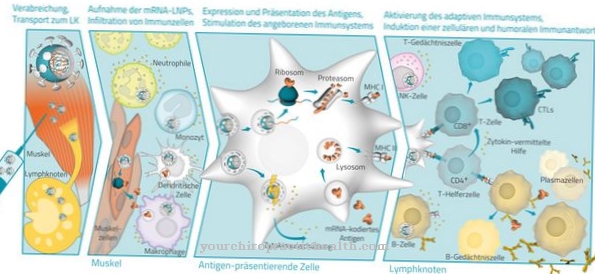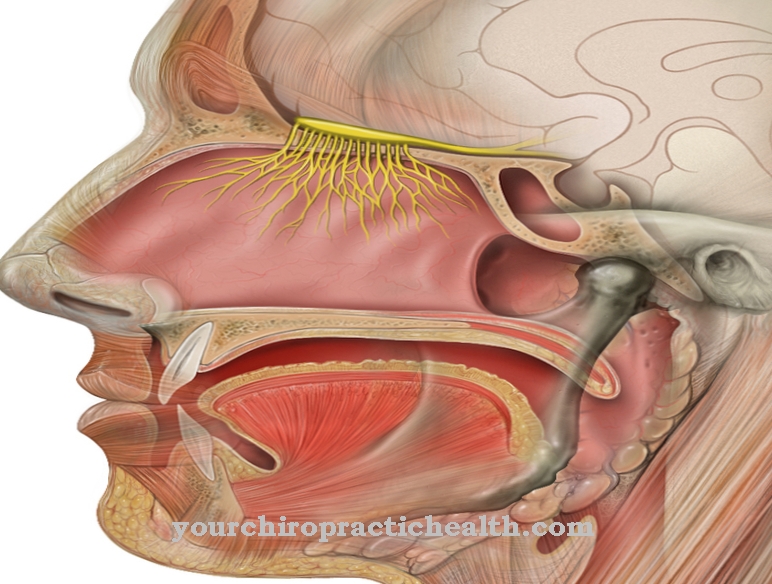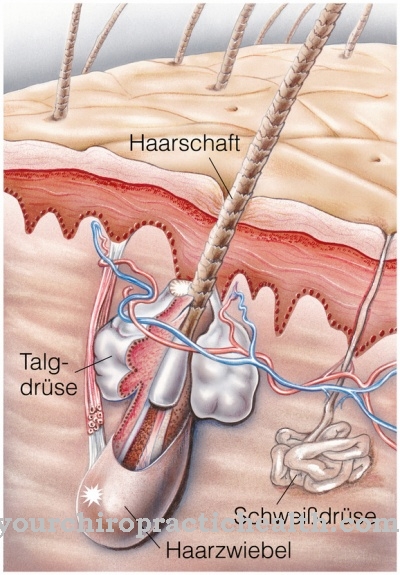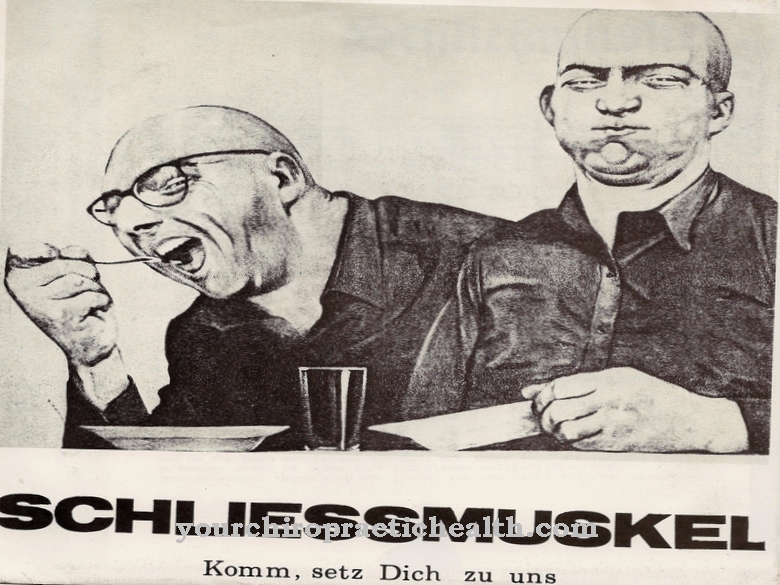In which Spinocerebellar tract are afferent nerve fibers that supply the cerebellum with information from the spinal cord. This flow of information includes motor and coordinative stimulation of the muscles, as well as positions of the joints. This is done through the subconscious deep sensitivity and thus enables the unconscious control and monitoring of muscle activities and joint positions.
What is the spinocerebellar tract?
As the spinocerebellar tract, the Cerebellar lateral cord tracts refers to the proprioceptive information from the spinal cord (medulla spinalis) to the cerebellum (cerebellum). If you translate the Latin term spinocerebellar tract, the course can be partially deduced. The term tractus refers to a stretch of tissue or a group of fibers, -spino refers to the spinal cord and -cerebellaris refers to the cerebellum.
The spinocerebellar tract is divided into the anterior spinocerebellar tract (ventral nerve cord) and the posterior spinocerebellar tract (dorsal nerve cord). The dorsal nerve cord probably has the fastest transmission of stimuli with 120m / s in the central nervous system. The rapid transmission of stimuli has the advantage that movements in the subconscious can be carried out quickly in dangerous situations. This can be, for example, pulling your hand away from a hot stove or general escape from dangerous situations.
These nerve tracts are mainly responsible for the transmission of the subconscious deep sensitivity from the spinal cord to the cerebellum and thus trigger unconscious and routine sequences of movements. They form an important function for sensitive motor skills and can become vital in various situations.
Anatomy & structure
The spinocerebellar tract is divided into the cerebellar lateral cord tractus spinocerebellaris anterior and tractus spinocerebellaris posterior. Together, these conduct proprioceptive afferents from the medulla spinalis (spinal cord) to the anterior lobe of the spinocerebellum (anterior lobe of the cerebellum). Proprioceptive afferents are the inflow of information about depth sensitivity.
The origin of the nerve tract is the spinal cord. The fiber tracts of the anterior spinocerebellar tract get their input from the spinal nerves at segment level in the posterior horn. Here they cross to the contralateral side and back. The result of the crossing is that the cerebellum only receives impulses from one side (ipsilateral) of the spinal cord. The fibers of the tractus spinocerebellaris posterior receive their input from spinal nerves at segment level in the nucleus thoracicus posterior and do not cross in the spinal cord.
In its course, the first nerve cell (neuron) of both fiber strands lies in the spinal ganglion. The spinal ganglion is a collection of nerve cell bodies that are found on the posterior nerve root of a spinal nerve. In a ganglion cell group located in the gray matter (nucleus dorsalis) of the spinal cord, the fiber strands of the tractus spinocerebellaris posterior on the lamina (nerve cell plates) V and VI are switched to the second neuron (nerve cell). The anterior spinocerebellar tract is interconnected in lamina V-VII.
The fiber strands end in the cerebellum. The dorsally running nerve path enters the cerebellum through the lower cerebellar stem (Pedunculus cerebellaris inferior) and the ventral nerve path through the upper cerebellar stem (Pedunculus cerebellaris superior). Both fiber strands end in the anterior lobe and the intermediate longitudinal zone. Both parts belong to the cerebellum and give off collaterals to the nucleus emboliformis and nucleus globosus.
Function & tasks
The spinocerebellar tract has the function of conveying the subconscious deeply sensitive stimuli in the form of information from the spinal medulla to the cerebellum. The information provided basically includes the sensitive control and coordination of fine motor skills from the periphery.
The fiber strands differ not only in the way they are connected to the neurons, but also in their main functions. The anterior spinocerebellar tract mainly conducts the stimuli from the periphery to the cerebellum. But feedback impulses from the descending pyramidal trajectories are also fed to the cerebellum in order to inform it about a currently initiated motor movement sequence.
The tractus spinocerebellaris posterior leads proprioceptive afferents in an unconscious form to the cerebellum. The main feature here is the state of tension of the muscle spindles and the individual joint positions with their tendons and joint capsules. The impulses from the deeper body layers reach the organ of equilibrium via the spinocerebellar pathways. But information from the proprioceptive perception of the skin receptors is also transmitted to the cerebellum via the dorsal nerve cord.
The cerebellum is thus informed about all proprioceptive afferents and can influence the muscle tone in connection with the respective joint position via the polysynpatic effervescence.
Diseases
If there is a dysfunction of the spinocerebellar tract due to illness or massive trauma, functions of the unconscious deep sensitivity are always disturbed. This can result in asynergy, for example. Asynergy is a disorder of the coordination of muscle groups.
The temporal coordination of the muscle groups for an arbitrary sequence of movements is particularly affected here. Movement disorders in the form of dysmetria can also occur. This leads to hypermetry or hypometry. The execution and sequence of movements cannot be controlled and carried out in a targeted manner. Another consequence can be the so-called dys-diadochokinesis. The movement coordination is disturbed, which means that no movement sequences can be carried out one after the other.
Further complaints can be gait ataxia (general unsteadiness of gait), tendency to fall, intension tremor (trembling of the limbs), phonation disorder and other speech disorders. Basically, a disorder of the spinocerebellar tract always leads to failures in the motor function. The main feature lies in all movement sequences that occur in the periphery through muscle activity and joint movements. The control of the necessary structures cannot be adequately implemented. This leads to insecurity, instability or excessive movements.

























.jpg)


